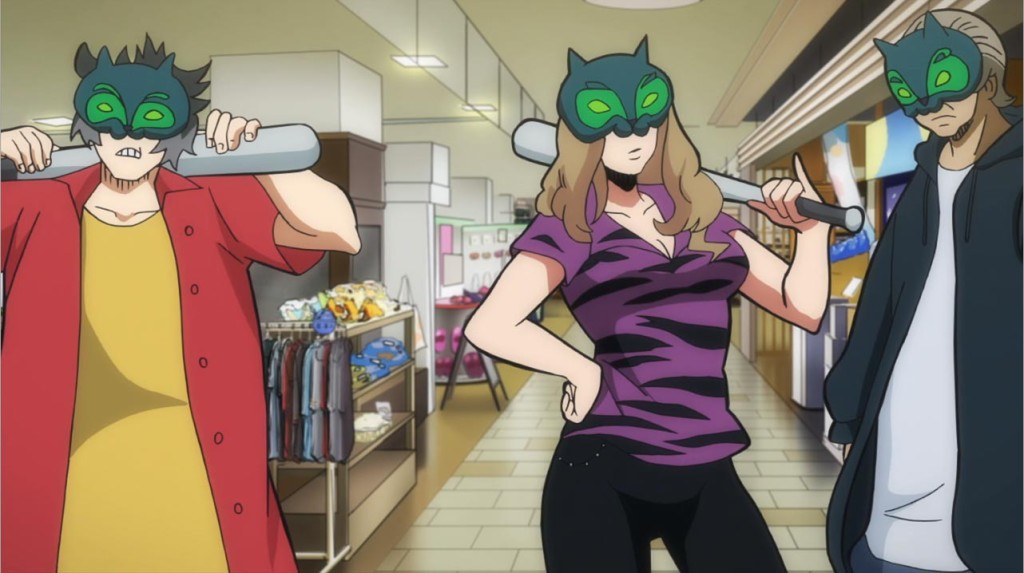What do Shinku Izumi, Light Yagami, Death the Kid, Alpaca (from Polar Bear’s Café) and Percy Weasley have in common? The answer is below.
A few last notes on Gatchaman Crowds:
• The ending was unsatisfying. Although the good guys won and evil was defeated, and the resolution made some sense in terms of the show’s premises, it left too many questions unanswered. For instance, who or what is JJ? What is his connection with Berg-Katze? How did he know to pick Hajime? Are Utsutsu and Jou still around? What is Berg-Katze? What is his origin? What about MESS? Perhaps there wasn’t enough air time available to make everything plain, but if so, then why was half the penultimate episode a clip show?
• Nakamura doesn’t show us the final confrontation of Hajime and Berg-Katze, so I don’t know if J. Greely’s prediction was accurate. It makes sense and could have happened, and it would have made a fine climactic scene.
• Hajime is the most alien character in the show. ((Except maybe for JJ, but he scarcely counts as a character.)) I’m not convinced that she’s human, even if she does talk to her mother on the phone.
• Nakamura has a more optimistic view of human nature than I do, and more faith in the possibility of utopia. I’d rather that people didn’t try to immanentize the eschaton. (On the other hand, if you can transform troublemakers and jerks into inert cubes, then the remaining people probably will get along better and behave more responsibly. For a while.)
• Shifting attitudes toward information technologies can be followed in anime. In 1998’s Serial Experiments Lain, the “wired” is weird, scary and dangerous. In 2007’s Dennou Coil, evolved Google Glass is a lot of fun, though occasionally still dangerous. In Gatchaman Crowds, smart phones and conscious artificial intelligence are taken for granted and are generally benign.
Despite my reservations, Gatchaman Crowds is one of the better shows I’ve seen recently and is worth your time. It’s by no means Kenji Nakamura‘s best, though. If you want to see what he is capable of, violate international copyright law and download Mononoke.
The answer to the quiz:
Spoiler
They were all performed by Mamoru Miyano, who was also the voice of Berg-Katze.
[collapse]
Update: Ken the Brickmuppet finds libertarian themes in Gatchaman Crowds.
Update II: Greely found a picture of the team in old-style uniforms:















